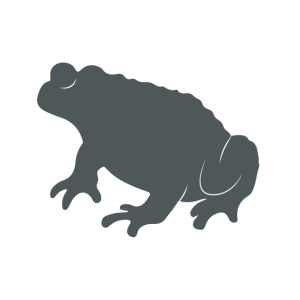

Up to 4 years
Length: 8 - 13cm; Weight: up to 80g
Native and widespread. Listed as Least Concern on the IUCN global Red List of Threatened Species. Protected in the UK under the Wildlife and Countryside Act. 1981. Priority Species under the UK Post-2010 Biodiversity Framework. Non-native, localised introduction to Ireland. Current impact unknown.
Widespread throughout much of mainland Britain, common toads are preferentially found in large, deep ponds that are suitable for breeding but may also be found in reservoirs. Deep ponds provide a safe refuge for tadpoles to avoid predation.
Individuals have olive-brown, warty skin, with copped eyes and short back legs; females are often have more reddish colouration. Toads will hibernate over winter, as with many other amphibian species, typically under log piles and stones. They migrate back to their breeding ponds on the first warm, damp evenings of the year in mid-February. After breeding in Spring, the rest of the year is spent feeding in woodland, gardens and hedgerows. Common toads feed on slugs, snails and other invertebrates, but larger toads may also eat grass snakes or harvest mice.
Declining in southern Britain due to freshwater pond habitats being threatened. In 2011, common toads were first recorded in Ireland at Long Lough, County Donegal. There is now thought to be a breeding population.
Individuals emerge from hibernation in February and can be active until around October. When they find a good source of food they can become sedentary - therefore they may remain in gardens for long periods during the summer months
